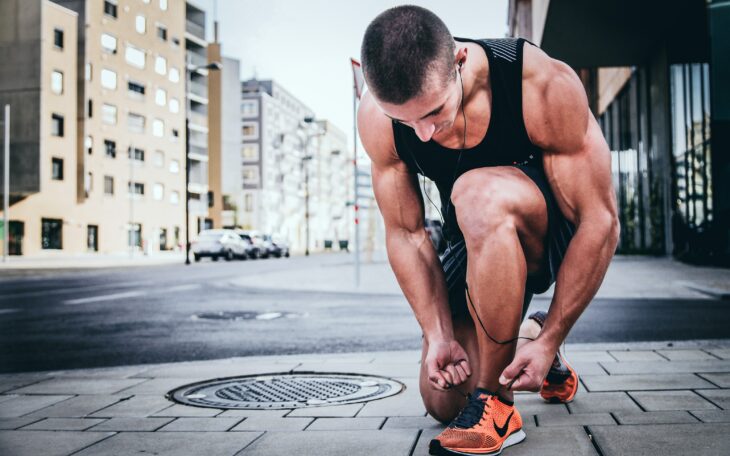Movement is essential for all species to interact with their environment. In the human body, cells have to move in order to grow, develop, and thrive. All movements in the human body require energy, so cells use specific processes to convert the food we eat into usable energy at a cellular level.
Cells have many compartments that carry out functions to aid in survival. If you can imagine each cell in the human body as a large city, it would have thousands of factories producing electrical energy. This energy is shipped and distributed into small packages throughout the city, and keeps the city thriving.
The busy factories continuously producing energy in most cells are called mitochondria. The energy they produce is a molecule created from sugar called adenosine triphosphate, otherwise known as ATP. ATP is the energy currency all living cells use to carry out functions necessary for life.
Muscle cells use ATP to help the human body carry out mobility functions, such as moving and standing up. Previous clinical researchers have shown a link between damaged mitochondria and poor muscle health. When muscles aren’t used daily, they start to lose function due to the disruption of mitochondrial production of ATP. This leads to diseases that cause muscle weakness and fatigue.
There are currently no cures or active treatments to reverse the rapid decline of muscle function. Researchers previously proposed cell therapy that transplanted healthy muscle cells directly into damaged muscles. However, this technique did not successfully regenerate damaged muscle cells in clinical trials.
Recently, scientists tried mitochondria extracted from healthy cells grown with a method that mimics the environment inside the body on a petri dish, called coculture. They implanted these cocultured mitochondria directly into the damaged cells using a microneedle smaller than the tip of a pen. However, the microneedle method caused damage and stress, and decreased the viability of the recipient cells.
Scientists at the University of Hong Kong recently set out to solve the implantation dilemma of mitochondria grown in coculture. They used a method that makes liquid microdroplets coated with oil, similar to the droplets formed when you mix water and oil, called droplet-based microfluidics. This method allowed the researchers to safely transfer the mitochondria through a process whereby cells engulf outside substances, called endocytosis. In medicine, the droplet-based microfluidics method is commonly used to deliver medicine within biodegradable microparticles to test new prescription medication.
The scientists extracted mitochondria from mice muscle cells grown in coculture. Instead of using a microneedle, they created microdroplets containing a damaged cell floating in liquid surrounded by mitochondria. This created an environment where the healthy mitochondria could be engulfed by the damaged muscle cells. Over two hours, the damaged muscle cells engulfed the mitochondria while encapsulated in the microdroplet. Then they were injected back into the mice.
The scientists expected this combination of coculture and microfluidics to reverse the degeneration of muscles by increasing mitochondrial ATP production. They found this method increased transfer efficiency of mitochondria by 75% compared to previously used methods of automated manipulation. These results indicated cells favored a liquid environment that allowed them time to engulf the healthy mitochondria without direct interference.
The scientists also examined genes related to mitochondria and muscle regeneration in a type of stem cells that develop into muscle cells, called myoblasts. After the successful mitochondrial transfer, mice myoblasts produced more structural proteins commonly found in healthy muscle cells. These proteins aid in metabolic reactions that form ATP. Myoblasts with the highest increase in mitochondria also produced the most ATP and showed the greatest increase in a structural protein gene found in muscle cells.
The scientists thought this technique was successful because the combination of coculture and microfluidics mimicked the enclosed environment inside the body where this process happens naturally. It created a more favorable environment for the cell. It also allowed more control over the mitochondrial transfer, which increased the chances of the cells successfully absorbing healthy mitochondria.
Currently, the most common treatments for muscle degeneration are exercise and better nutrition. The human body will spontaneously transfer healthy mitochondria to damaged cells gradually over a long period of time. These scientists concluded using coculture and microfluidics could speed up this process, but further research is needed to improve the transfer method.
The team suggested future work should investigate cellular and immune responses after mitochondrial transfer, to test how effective the new mitochondria are. The scientists also hope this study will open new avenues for this technique to enhance other types of cell therapies.


